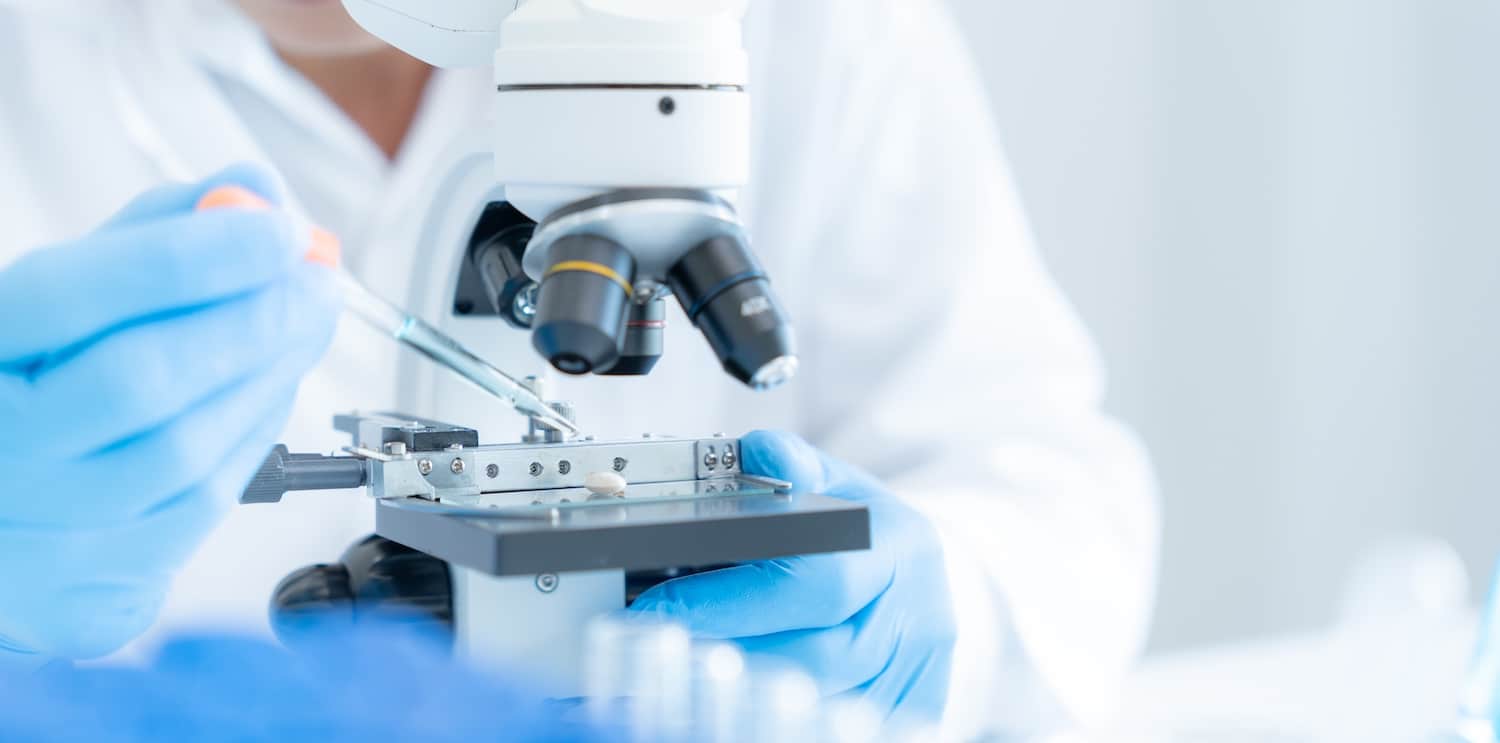What is Whole Genome Sequencing? Your Complete Guide

Facing a life-changing medical condition can be frustrating, especially when you don’t have an official diagnosis or have limited information. Many patients with genetic disorders, rare diseases, and cancer look to genetic testing for answers and clarity. However, the standard gene panel tests don’t always return useful information.
This is when whole genome sequencing (WGS) becomes invaluable.
If you’re struggling with medical uncertainties, this guide will walk you through the science behind whole genome sequencing, its benefits and accuracy, and how it’s providing hope to patients across the globe.
Genetic sequencing
To start, let’s define genetic sequencing. Also known as DNA sequencing, this is the process of determining the precise order of base pairs within a DNA molecule. You might remember from biology class that those base pairs, or nucleotides, are the rungs of the DNA ladder, or the building blocks of DNA. They include adenine (A), thymine (T), cytosine (C), and guanine (G). The specific sequence of these nucleotides carries genetic information that dictates the biological functions and characteristics of every person.
What is whole genome sequencing?
Whole genome sequencing refers to a comprehensive method of genetic sequencing that is able to analyze nearly all of your DNA¹ to detect genetic variations that may be related to your symptoms or condition. WGS tests see beyond other types of genetic tests and sequencing methods to analyze nearly the entire human genome, or almost all of the genes in your body.
Whole genome sequencing tests are most likely to result in a diagnosis² of a rare disease or identify existing genetically driven cancers when compared to other genetic tests on the market. This comprehensive view increases the likelihood of finding useful clinical information, equipping your provider with additional data that could lead to new treatment options that may improve your condition.
We’ll dive deeper into whole genome sequencing later in this blog.
Types of genetic testing and their differences
There are a few types of genetic sequencing. Here’s a breakdown.
Targeted gene panel testing
Targeted gene panel tests can be helpful when you’re trying to determine whether you have a potentially disease-causing genetic change. These tests are often targeted toward a small subset of genes that are most likely to contain these changes. You may hear standard genetic tests referred to as panel testing because they only analyze one panel of genes at a time. Each panel is specifically designed to detect mutations in genes known to be associated with particular conditions or diseases.
Whole exome sequencing
Whole exome sequencing analyzes the human exome, which is made up of all the protein-encoding genes (or exons) in your genome. These genes produce proteins that support various biological processes within the body.
While the exome only makes up about 1-2% of a person’s genome, researchers estimate that roughly 85%³ of all genetic variants that cause genetic diseases are located in the exome.
Whole genome sequencing
Whole genome sequencing analyzes nearly all protein-coding and non-protein-coding genes that make up the human genome. This is equivalent to more than 99% of your genome.
Whole genome sequencing (WGS) can identify changes in your DNA that have been present since birth (germline changes) as well as changes that occurred randomly during your life (somatic changes). Germline changes are inherited and are found in every cell, while somatic changes can develop at any time and are not inherited. For example, cancerous tumor cells are a type of unhealthy cell that often contain somatic changes.
WGS can also identify many other types of changes to your DNA that cannot be found through other genetic test types. Examples include:
- More accurate detection of gene copy changes (copy number variants)
- More precise identification of small DNA changes (point variants)
- Large structural changes across the whole genome
This far surpasses other genetic tests in coverage and offers patients and providers with the most genetic information possible.
Why seeing a more comprehensive picture of your genome matters
When a genetic test only analyzes a portion of your genes, it may miss gene changes elsewhere in your genome that contain important indicators about your health.
For example, more than a quarter4 of cancer patients have complicated genetic variants that are missed by standard panel and exome sequencing. Additionally, whole genome sequencing tests can lead to up to 20% more diagnoses of rare diseases than other genetic tests5. Having this extra coverage helps ensure you aren’t leaving any important genetic changes uncovered.
What is whole genome sequencing used for?
Whole genome sequencing tests are most often used to identify inherited disorders or to learn more about DNA changes that may be driving a person’s disease progression. These tests are used to:
● Uncover the cause of your symptoms
● Support a diagnosis
● Help identify which treatments may be most and least effective
● Possibly open up new treatment opportunities through clinical trials
Because it analyzes almost your entire genome, whole genome sequencing can empower your provider with genetic knowledge to determine your care approach with more precision. Amazingly, whole genome sequencing can be completed in as little as two to three weeks, meaning it can provide important insights to inform a diagnosis or identify critical health indicators relatively quickly.
How do whole genome sequence tests work?
The process of whole genome sequencing on the patient’s side is fairly simple and easy. The samples that are collected may include a blood draw or tissue sample. Depending on the company that’s offering the test, this collection may take place at your doctor’s office or in the convenience of your home.
Once the samples are collected, they are mailed off to a lab that has the equipment needed to complete the sequencing test. Once the test is complete, genomic experts from the lab will analyze the test findings and create a report summarizing those findings.You can go over your report with your doctor during your next visit.
Some companies even offer access to genetic counseling and easy-to-read summary reports that include suggestions for next steps in your treatment plan. They may also include further testing recommendations.
How accurate is whole genome sequencing?
Whole genome tests are considered highly accurate due to their high level of sensitivity. This refers to how well they can detect a disease or genetic variant in people who have that disease or variant.
For example, if you test 100 people for a condition and the test correctly identifies 80% of them, then the sensitivity level would be 80%. Whole genome sequencing tests have a sensitivity level of greater than 95%6,7.
Is whole genome sequencing expensive?
Some whole genome sequencing test providers can offer genomic tests at a price that’s comparable to a standard panel test. Sequencing costs can also vary per person. It will depend on the type of test ordered and whether any additional services are included (such as access to a genetic counselor to help explain your results).
How can I order a whole genome sequencing test?
Ordering a test from Inocras is easy. Simply purchase your selected test using our convenient online portal, and a medical provider will review and approve your order request so you can begin your test.
Inocras’s CancerVision and RareVision tests will provide you with access to a specialist who will help walk you through the testing journey if you have questions. We also provide genetic counseling at no additional cost to the patient. This is a great option for people who are looking to get a second opinion on a diagnosis or treatment plan or who are seeking additional insights about their health.
You could be one test away from life-changing answers. Get the clarity you need – order a test now.
References
- Costain G, Cohn RD, Scherer SW, Marshall CR. Genome sequencing as a diagnostic test. CMAJ. 2021 Oct 25;193(42):E1626-E1629. doi: 10.1503/cmaj.210549. PMID: 34697096; PMCID: PMC8562981.
- Clark, M.M., Stark, Z., Farnaes, L. et al. Meta-analysis of the diagnostic and clinical utility of genome and exome sequencing and chromosomal microarray in children with suspected genetic diseases. npj Genomic Med 3, 16 (2018). https://doi.org/10.1038/s41525-018-0053-8
- “Whole Exome Sequencing.” Yale Medicine, 22 Apr. 2024, www.yalemedicine.org/conditions/whole-exome-sequencing.
- The ICGC/TCGA Pan-Cancer Analysis of Whole Genomes Consortium. Pan-cancer analysis of whole genomes. Nature 578, 82–93 (2020). https://doi.org/10.1038/s41586-020-1969-6
- Anath C. L, et al. Improved diagnostic yield compared with targeted gene sequencing panels suggests a role for whole-genome sequencing as a first-tier genetic test. Genetics in Medicine, Volume 20, Issue 4, 2018. https://doi.org/10.1038/gim.2017.119.
- Roepman Pet et al. Clinical Validation of Whole Genome Sequencing for Cancer Diagnostics. J Mol Diagn. 2021 Jul;23(7):816-833. doi: 10.1016/j.jmoldx.2021.04.011. Epub 2021 May 6. PMID: 33964451.
- Ferguson, S., Sriram, S., Wallace, J. K., Lee, J., Kim, J. A., Lee, Y., … Connolly-Strong, E. (2024). Analytical and Clinical Validation of a Target-Enhanced Whole Genome Sequencing-Based Comprehensive Genomic Profiling Test. Cancer Investigation, 42(5), 390–399. https://doi.org/10.1080/07357907.2024.2352438


